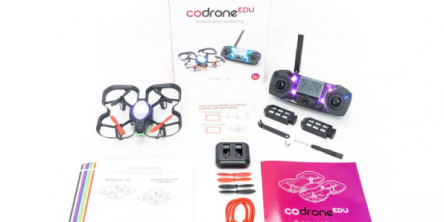Latest Trends in Digital Transformation for the Media and Entertainment Industry

Today, just like the rest of the world, the media and entertainment industry has become entirely digitally driven. Most of the media and entertainment sector’s revenue share in 2023 is expected to be taken by digital revenues. The industry today finds itself at the epicenter of a digital revolution. With audiences increasingly turning to digital platforms for their content consumption, traditional media companies are compelled to adapt and innovate. The confluence of cutting-edge technologies, evolving business models, and changing audience behaviors are reshaping the landscape of this dynamic industry.
In this blog, I’ll delve into the latest digital transformation trends revolutionizing the media & entertainment industry while offering insights into how these changes are redefining how we create, distribute, and consume content in this digital age.
Digital Enterprise Transformation: Stats in Media and Entertainment Sector
Such changes do not occur overnight — such changes happen piece by piece and with movement from one trend to another. Take OTT platforms, for example — these services have led to a massive drop in the number of people who watch TV.
According to Statista;
- The value of the media and entertainment market showcases a higher growth level and will reach around 2.93 trillion by the end of 2026
- The level of Revenue in the Digital Media market is projected to reach US$627.60bn in 2023
- The video streaming apps Revenue is expected to show an annual growth rate (CAGR 2023-2027) of 9.48%, resulting in a projected market volume of US$137.00bn by 2027
Much like these trends, companies in the cut-throat media and entertainment sector must keep an eye on the newer and modern trends emerging in the industry. This will help to ensure their business’ success and growth. So, here is a list of some of the most essential 2023 digital trends in the media and entertainment sector.
Media and Entertainment: 4 Digital Enterprise Transformation Trends to Watch Out for
- Artificial intelligence (AI): The applications of AI in the media and entertainment sector are rich and varied. For example, it creates and delivers personalized recommendations to viewers and generates new content. Furthermore, this technology can also be used to analyze extensive amounts of data to find patterns and trends that can then be used to create more relevant and engaging content. Oh, and did we mention that AI is also used to create new forms of content, such as augmented reality (AR) and virtual reality (VR) experiences?
- D2C video streaming: With users demanding more and more control over their viewing experiences, Direct-to-consumer (D2C) video streaming has emerged as an increasingly popular option in the media and entertainment world. The D2C ecosystem already has many big-ticket players, including Amazon Prime Video and Netflix. These platforms already offer a wide variety of content that can be streamed on demand, and that too without a cable TV subscription. We reckon that as the market continues to surge, more and more companies will foray into the D2C streaming services arena.
- Blockchain: Blockchain, i.e., distributed ledger technology, was first popularized by cryptocurrency a few years ago. Nonetheless, technology is also starting to enter the media and entertainment sector. Blockchain is used to keep an eye on the ownership of digital assets, such as movies, music, and video games, to help prevent counterfeiting and piracy and help create new business models for the industry.
- Personalization: Yet another essential trend to note is personalization. An increasing number of consumers are demanding personalized experiences, which is why media companies are leveraging AI and their wealth of data to create personalized recommendations, content, and even ads. This intense focus on personalization is because it helps companies to increase retention and also helps them to understand their target audiences better.
While these digital enterprise transformation trends demonstrate immense potential for the sector, it would be wise for media and entertainment companies to remember that the industry is highly dynamic. So, newer developments will likely surface, and soon, in response to technological advancements and consumer demands.
Similar Articles
Enterprise cloud adoption is now a strategic goal. As modern businesses migrate to the cloud for scalability, flexibility, and cost-effectiveness, integration with DevOps principles becomes important. DevOps in the context of cloud adoption is more than just a methodology; it has shown to be a game changer, significantly enhancing efficiency, collaboration, and overall development processes.
Digital transformation is leading the way in reshaping the factories of the future. The term smart factories or industry 4.0, enables manufacturers to refine production processes, manage global market competition, and realize significant returns
In the fast-paced world of photography and videography, staying ahead of the curve requires cutting-edge technology and innovative features. One brand that has been making waves in the industry is Insta360, and for good reason. Insta360 cameras have gained popularity for their exceptional capabilities and user-friendly design.
In the ever-evolving landscape of education, fostering an early interest in coding has become crucial. One innovative tool that has taken the realm of coding education to new heights is the CoDrone. Tailored specifically for young learners, CoDrone not only introduces kids to the fascinating world of programming but also brings their coding adventures to life in the sky
In this digital era cloud computing has become an integral part of business operations. It is flexible, scalable and cost-effective, making it a top choice for many organizations. But with the arrival of various kinds of cloud solutions, selecting which one's right for your business can be a bit overwhelming.
In the dynamic realm of the Internet of Things (IoT), establishing a resilient and efficient infrastructure is imperative for the prosperity of any IoT initiative. Whether working on a smart home system, industrial automation, or healthcare solutions, thoughtful evaluation of diverse factors is indispensable
Over evolution in software testing, two prominent testing methodologies have surfaced: Big Data Testing and Traditional Database Testing. Big Data Testing is tailored for handling the extensive amounts, diverse types, and rapid data flow inherent in the big data environment.
In the fast-paced world of supply chain management, it is vital to coordinate logistics operations for businesses aiming to meet customer demands, reduce costs, and stay competitive.
The handling of projects may be characterized as a laborious and complex responsibility. From the formation of employment positions through allocating resources for managing work in progress, significant amounts of business hours and resources are used.









